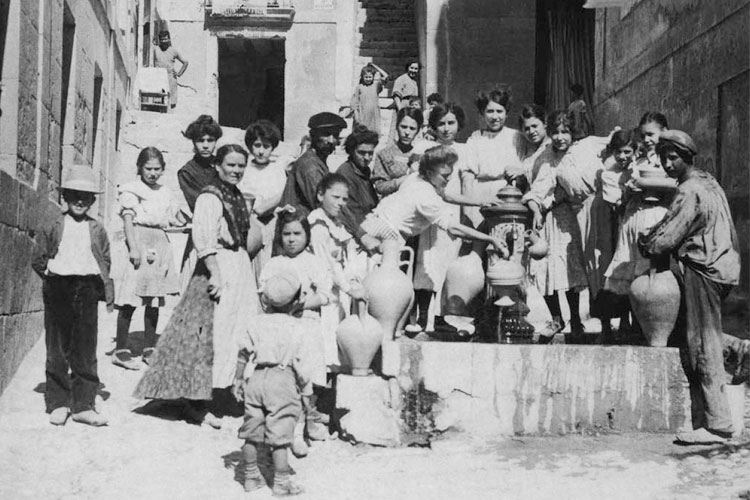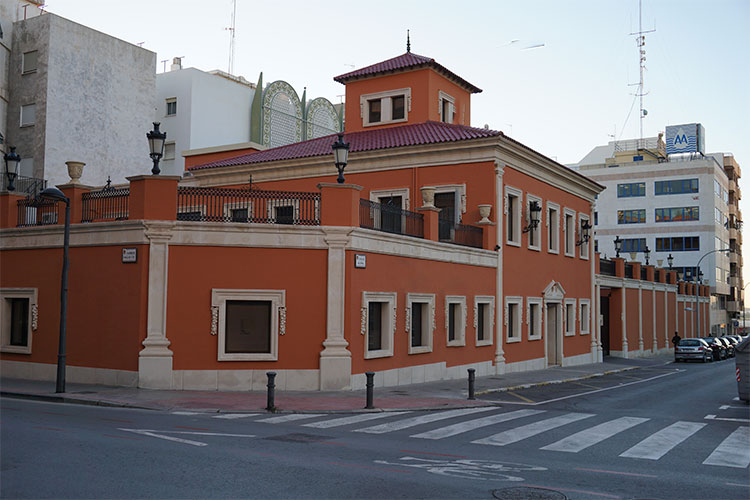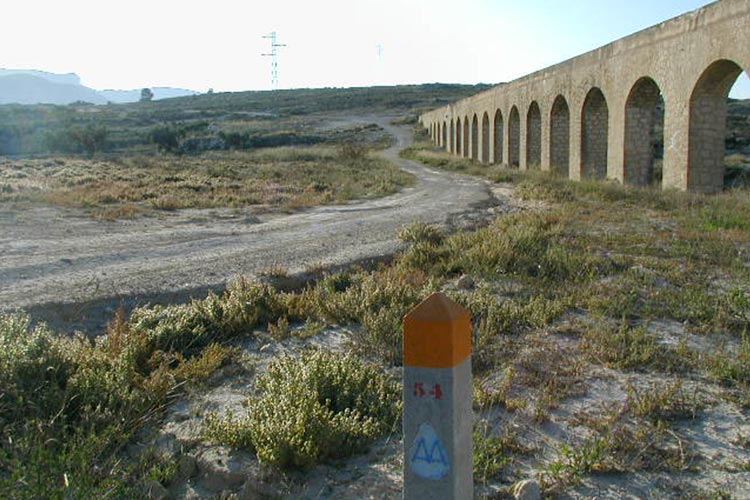Discover our origins
The origins of Aguas de Alicante's management date back to 1898, the year in which Alicante was first supplied by water brought from Sax. Now, Aguas de Alicante is a company that uses cutting-edge technology and is committed to a policy of integrated quality aimed at sustainable development and environmental protection.
-
Background
In the past, a lack of water was a problem of vital importance in Alicante. In fact, it has had a negative impact on the city's socioeconomic development for a long time. This water scarcity is due mainly to climate conditions: the area's climate is predominantly semi-arid, with little precipitation and high temperatures. There are no river systems, and no large surface or groundwater reserves.
The solution to this natural deficit is catchment of water from other locations, or storage of water from various systems that, in any case, require a concept of planning, development and use, and a complex water infrastructure system. The main features of this system are that it involves the search for, catchment and storage of water from natural springs and wells and reserves of surface waters taken from distant basins, such as those of the River Taibilla or the River Tajo.
The struggle to alleviate water scarcity and guarantee water resources has been a recurring, determining factor since the origins of the city. However, the problem has really affected Alicante since the industrial and demographic expansion of the nineteenth century. In this context, Alicante City Council continued to try to solve the problem of water supply to the city, which at the end of the century already housed 30,000 inhabitants. A new project arose in 1871: Alicante City Council signed the first contract with the company Canal de Alicante, to supply the city from artesian wells situated in the municipality of Sax, 48 km away.

In 1879, the Canal de Alicante company was dissolved and the wells were bought by Juan Leach Giró, who in 1884 asked the Council of Alicante for the public utility of the water to supply the city. In 1885, the Civil Government authorised the necessary works for the Canal del Cid.
In 1891, Leach Giró sold the wells to Enrique Caucourte y Joulliot, who presented Alicante City Council with a supply project that was approved in May 1892. He won the competitive tender and on 11 July 1893 signed the deeds for the exclusive administrative license 'to supply water to the city of Alicante' during a period of sixty years.
-
The formation of a mixed private-public company
As the end of the 60-year license period was drawing near and the water supply problem needed to be resolved, at a Municipal Plenary Meeting of Alicante City Council on 30 September 1952 it was agreed that a committee should be formed to study the municipalisation of the service as a monopoly. After processing the corresponding dossier, on 17 September 1953, the company Aguas Municipalizadas de Alicante, Empresa Mixta was formed by Alicante City Council and the Sociedad Mercantil Aguas de Alicante, S.A. Each partner held 50% of the capital stock.

At the Municipal Plenary Meeting of 3 April 1987, an agreement was adopted regarding the award of the municipal sewer system service's management to Aguas de Alicante. On 14 May 1987, an administrative contract was signed that extended the duration of the mixed private-public company until 28 March 2016.
Finally, at the Municipal Plenary Session of Alicante City Council of 11 July 2006, the Master Plans for Drinking Water Supply, the Sewer System and Treated Water Reuse were accepted, and the period for managing these services was extended until 14 May 2036. -
Incorporation of new flows and new water supply infrastructure
Towards the end of the 1950s, the water supply continued to come exclusively from the wells in Sax and Villena, but it was no longer sufficient for Alicante (particularly considering the incipient development of Albufereta and Playa de San Juan). Increasing demand forced Alicante City Council to join the Canales del Taibilla Municipal Association, created in 1927 to supply Cartagena Naval Base from the River Taibilla. Alicante received water from the Association for the first time in 1958, which enabled the urban development of Playa de San Juan from 1961.

In 1967, work started on the construction of the Tajo-Segura water transfer channel, which began to provide water in 1977. Aguas Municipalizadas de Alicante, E.M. (AMAEM) receives water from this canal through the Canales del Taibilla Municipal Association. Work has now begun on the Júcar-Vinalopó water transfer channel. Since 1973, AMAEM has been carrying out works to divide the Canal del Cid and continues to look for new water sources from new underground catchments and through agreements with irrigation associations in the areas of Alto Vinalopó and Medio Vinalopó.
In 1984, a 5-km underwater pipe was opened to supply drinking water to Tabarca Island. This is the only island on the Spanish coast that is supplied in this way. In addition, AMAEM supplies water to part of the Mutxamel municipality and, since 2006, it has managed the service in El Campello.
-
Current situation
Currently, AMAEM is responsible for providing a water supply service to the municipalities of Alicante, Sant Vicent del Raspeig, Sant Joan d’Alacant, El Campello, Monforte del Cid and Petrer, and sewer services to Alicante, Sant Joan d'Alacant and Petrer. -
Commitment to the future
In our corporate vision, we value the success of the public-private management model that has made Aguas de Alicante a national and international benchmark. The new paradigms require an innovative focus to put people at the centre of our management. At Aguas de Alicante, we are people serving people.
